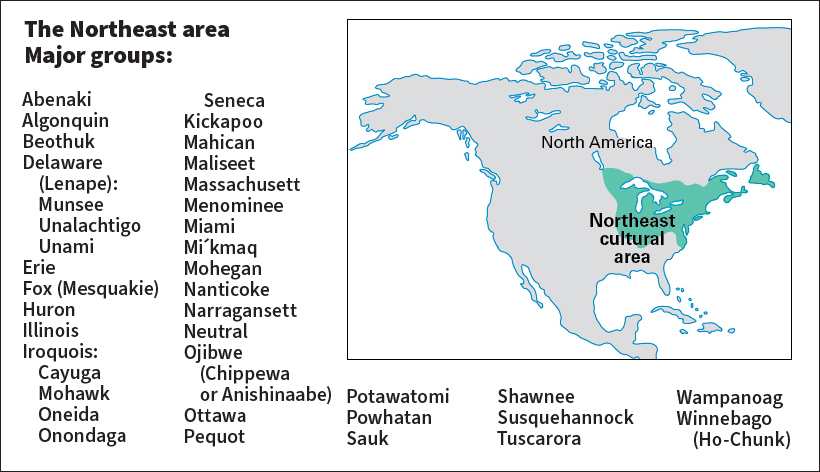Iroquois << IHR uh kwoy >> were a federation of Native American groups that once occupied most of what is now New York state. From east to west, the tribes included the Mohawk, Oneida, Onondaga, Cayuga, and Seneca. The Iroquois called themselves the Haudenosaunee. This name refers to their dwellings and means we longhouse builders. The Iroquois became famous as the Five Nations, or Iroquois Longhouse. The federation was the most efficient North American Indigenous (native) organization.

The federation was formed by the early 1600’s. About 1722, the Tuscarora people joined the Iroquois League, which then became known as the Six Nations. The confederation of states that became the United States of America may have been patterned after the league.
Women played an important part in Iroquois life. They nominated members of the tribal council and removed them from office if they misbehaved. Each tribe sent a given number of its leaders to the great federation council. The language of the Iroquois belonged to a large language family, the Iroquoian.
The Iroquois were brave and skillful warriors. They obtained firearms from the Dutch in the early 1600’s, and soon subdued all the tribes from the Saint Lawrence River to Tennessee and from Maine to Michigan. They controlled the fur trade in their territory and boat travel on the Great Lakes.
Some historians say that if the French had been able to make allies of the Iroquois, they might have won the French and Indian wars, and the United States might have become French. But the Iroquois, under such leaders as Joseph Brant, sided with the British. Later, however, the league broke up over the question of whether to join the British or the Americans during the American Revolution (1775-1783). All of the Iroquois except the Oneida and Tuscarora took the British side. In 1779, General John Sullivan, under orders from George Washington, took revenge on these tribes by destroying their villages.
Most of the Cayuga and Mohawk and some of the Tuscarora moved to reservations in Canada. In Canada, they are recognized as a First Nations people. A majority of the Oneida moved to Wisconsin, and a few Seneca went to live in Pennsylvania and Oklahoma. The Onondaga and most of the Seneca and Tuscarora remained on five reservations in New York state.
According to the 2020 U.S. census, about 37,000 people belong to Iroquois tribes. The present headquarters of the Iroquois confederacy are at Onondaga Reservation, south of Syracuse, New York. This reservation contains the council houses, the home of the chief, and the grave of Handsome Lake, a Seneca prophet.
